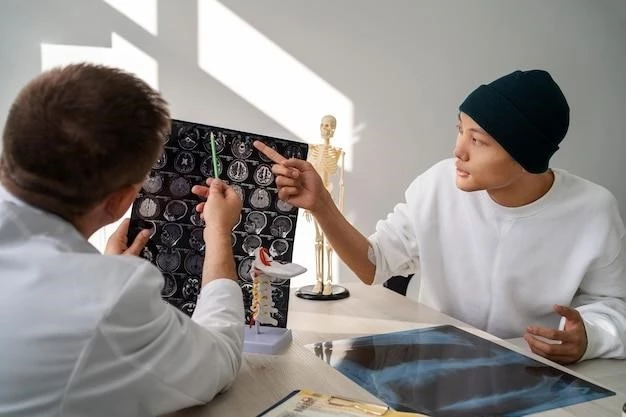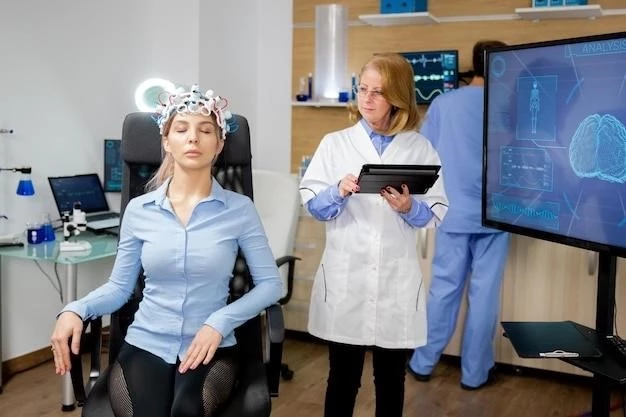Understanding Arthrogryposis, Epileptic Seizures, and Migrational Brain Disorders
Arthrogryposis⁚ Causes and Treatment
Arthrogryposis is characterized by joint contractures and muscle weakness. Causes include genetic factors, maternal illness during pregnancy, or environmental factors. Treatment aims to improve joint mobility through physical therapy, splinting, and surgery, depending on the severity.
Physical therapy plays a crucial role in improving muscle strength and flexibility. It is essential to work with healthcare professionals to develop a personalized treatment plan that addresses the specific needs of the individual. Surgery may be recommended in severe cases to release tight joints or correct bone abnormalities.
Supportive devices like orthotics and braces can help improve mobility and function. Assistive devices may also be beneficial to help with daily activities. It is important for individuals with arthrogryposis to have regular follow-ups with healthcare providers to monitor progress and make any necessary adjustments to the treatment plan.
Emotional support and counseling can also be valuable for both the individual with arthrogryposis and their family members. By taking a multidisciplinary approach to treatment, individuals with arthrogryposis can improve their quality of life and maximize their independence.

Understanding Epileptic Seizures
Epileptic seizures are caused by abnormal electrical activity in the brain, leading to temporary changes in sensation, behavior, or movement. Seizures can vary widely in their presentation and may involve convulsions, staring spells, or repetitive movements.
It is crucial to understand the triggers that may provoke seizures, such as lack of sleep, stress, or certain medications. Keeping a seizure diary can help identify patterns and potential triggers. Avoiding triggers and maintaining a healthy lifestyle can help reduce the frequency of seizures.
If you witness someone having a seizure, stay calm and ensure their safety by removing any nearby objects that could cause harm. Do not restrain the person or put anything in their mouth. Time the seizure, and if it lasts longer than 5 minutes, or if multiple seizures occur without recovery in between, seek emergency medical help.
Managing epilepsy requires working closely with healthcare providers to determine the best treatment plan. This may involve medication, lifestyle modifications, and in some cases, surgery. It is essential for individuals with epilepsy to adhere to their treatment plan, attend regular medical appointments, and seek support from loved ones and epilepsy support groups.
Migrational Brain Disorder Symptoms
Migrational brain disorders are a group of conditions where the neurons in the brain do not migrate to their proper location during fetal development. Symptoms vary depending on the specific disorder but may include developmental delays, seizures, intellectual disabilities, and movement disorders.
Common symptoms of migrational brain disorders include difficulties with motor skills, speech and language delays, learning disabilities, and challenges with social interactions. Some individuals may also experience behavioral problems, attention issues, and sensory processing difficulties.
Early detection and intervention are crucial to support individuals with migrational brain disorders. A comprehensive evaluation by a team of healthcare professionals, including neurologists, geneticists, and developmental specialists, is necessary to diagnose the specific disorder accurately.
Once a diagnosis is made, a tailored treatment plan can be developed to address the individual’s unique needs. This may involve a combination of therapies such as physical therapy, speech therapy, occupational therapy, behavioral interventions, and educational support.
Support from family, therapists, and educators plays a vital role in helping individuals with migrational brain disorders reach their full potential. By understanding the symptoms and implementing appropriate interventions, individuals with these disorders can lead fulfilling lives and achieve developmental milestones to the best of their abilities.
How to Diagnose Arthrogryposis
Diagnosing arthrogryposis involves a comprehensive evaluation by a team of healthcare professionals, including orthopedic specialists, neurologists, and geneticists. The diagnostic process typically includes a physical examination to assess joint mobility, muscle strength, and any associated deformities.
Imaging studies such as X-rays, ultrasounds, or MRIs may be used to visualize joint abnormalities, muscle structure, and bone alignment. Genetic testing can help identify any underlying genetic factors contributing to arthrogryposis.
Additionally, electromyography (EMG) and nerve conduction studies may be utilized to evaluate muscle function and nerve activity. Blood tests may also be conducted to rule out other potential causes of joint contractures.
Since arthrogryposis can vary in severity and presentation, early diagnosis is key to implementing appropriate treatment interventions. A timely and accurate diagnosis allows healthcare providers to develop a personalized treatment plan that addresses the specific needs of the individual.
It is essential for individuals with suspected arthrogryposis to seek evaluation from healthcare professionals with expertise in musculoskeletal conditions. By undergoing a thorough diagnostic process, individuals can access the necessary support and interventions to optimize their quality of life and mobility.
Managing Epileptic Seizures in Children
Managing epileptic seizures in children requires a collaborative approach involving healthcare providers, parents, and educators. It is crucial to educate caregivers and school personnel about the child’s condition and how to respond to seizures effectively.
Consistent medication adherence is vital in controlling seizures. Working closely with a pediatric neurologist to find an appropriate medication regimen tailored to the child’s needs can help minimize seizure frequency and severity. Regular follow-up appointments are essential to monitor medication effectiveness and adjust dosages if needed.
Creating a safe environment for the child is important to prevent accidents during seizures. Removing sharp objects, padding sharp corners, and ensuring the child’s bed is safe can reduce the risk of injury. Developing a seizure action plan outlining steps to take during a seizure and when to seek medical help is beneficial.
In addition to medication, non-pharmacological therapies such as dietary modifications, lifestyle changes, and epilepsy-specific therapies like ketogenic diet or vagus nerve stimulation may be considered. Engaging in regular physical activity, maintaining a healthy diet, and ensuring an adequate sleep schedule can also contribute to seizure management.
Emotional support for both the child and their family is crucial. Joining support groups, connecting with other families facing similar challenges, and seeking counseling can help cope with the emotional impact of epilepsy. By implementing a comprehensive management plan and fostering a supportive environment, children with epilepsy can lead fulfilling lives while managing their condition effectively.
Treatment Options for Migrational Brain Disorders
When it comes to treating migrational brain disorders, a multidisciplinary approach involving neurologists, developmental specialists, therapists, and geneticists is essential. The treatment plan is tailored to address the specific symptoms and challenges faced by each individual with a migrational brain disorder.
Therapies such as physical therapy, occupational therapy, and speech therapy play a crucial role in improving motor skills, communication abilities, and overall quality of life. These therapies are designed to address developmental delays, movement disorders, and cognitive impairments.
Medications may be prescribed to manage symptoms such as seizures, behavioral issues, or movement disorders associated with migrational brain disorders. Working closely with a healthcare provider to monitor medication effectiveness and adjust dosages if needed is important.
Behavioral interventions, educational support, and social skills training can help individuals with migrational brain disorders improve their adaptive skills and independence. Special education services may be necessary to accommodate learning needs and promote academic progress.
In some cases, surgical interventions may be considered to address specific complications related to migrational brain disorders. Genetic counseling can provide valuable information about the underlying genetic causes of the disorder and help families understand the implications for future planning.
Support from family members, therapists, educators, and community resources is crucial in helping individuals with migrational brain disorders thrive. By combining various treatment modalities and incorporating supportive services, individuals with these disorders can achieve their full potential and lead fulfilling lives.
Living with Arthrogryposis⁚ Tips and Advice
Living with arthrogryposis presents unique challenges that can be managed effectively with the right strategies and support. Here are some tips and advice to enhance quality of life for individuals with arthrogryposis⁚
- Stay active⁚ Engage in physical activities that are safe and enjoyable, focusing on improving strength and flexibility.
- Adapt your environment⁚ Make modifications at home and work to enhance accessibility and ease of daily tasks.
- Seek support⁚ Connect with support groups, therapists, and healthcare providers who specialize in arthrogryposis.
- Embrace technology⁚ Explore assistive devices and technologies to help with mobility and independence.
- Educate others⁚ Advocate for yourself and educate others about arthrogryposis to raise awareness and promote understanding.
- Maintain a positive attitude⁚ Focus on your abilities and strengths, setting realistic goals and celebrating achievements.
- Practice self-care⁚ Prioritize mental and emotional well-being through relaxation techniques, hobbies, and self-care activities;
- Plan for the future⁚ Develop long-term plans with healthcare professionals to address changing needs and access necessary resources.
- Stay informed⁚ Stay updated on research and advancements in arthrogryposis treatment and management to make informed decisions.
By incorporating these tips into daily living, individuals with arthrogryposis can navigate challenges with resilience, maintain a fulfilling lifestyle, and achieve their goals despite physical limitations.
Research Advances in Epileptic Seizures
Recent research in the field of epileptic seizures has led to significant advancements in understanding the underlying mechanisms and improving treatment options. Here are some key research advances that offer hope for individuals with epilepsy⁚
- Genetic studies⁚ Advances in genetic research have identified specific genes associated with epilepsy, paving the way for personalized treatment approaches based on genetic causes.
- Brain imaging technologies⁚ Advanced imaging techniques such as functional MRI and PET scans provide valuable insights into brain activity during seizures, aiding in diagnosis and treatment planning;
- Seizure prediction and prevention⁚ Researchers are exploring innovative technologies like wearable devices and implantable sensors to predict seizures and intervene before they occur.
- Novel medications⁚ Ongoing research is focused on developing new antiepileptic drugs with improved efficacy and fewer side effects, offering more options for seizure control.
- Brain stimulation therapies⁚ Techniques like vagus nerve stimulation and responsive neurostimulation are showing promise in reducing seizure frequency and improving quality of life for individuals with drug-resistant epilepsy.
- Epilepsy surgery advancements⁚ Surgical advancements, including minimally invasive procedures and innovative surgical techniques, are expanding treatment options for individuals who may benefit from surgery to control seizures.
- Cognitive and behavioral interventions⁚ Research is highlighting the importance of cognitive and behavioral therapies in managing epilepsy-related cognitive impairments and psychiatric comorbidities.
- Regenerative medicine⁚ Investigational approaches using stem cells and gene therapy hold potential for repairing damaged brain tissue and reducing seizure activity in certain types of epilepsy.
By staying informed about these research advances and participating in clinical trials, individuals with epilepsy can access cutting-edge treatments and contribute to the ongoing progress in understanding and managing epileptic seizures.
